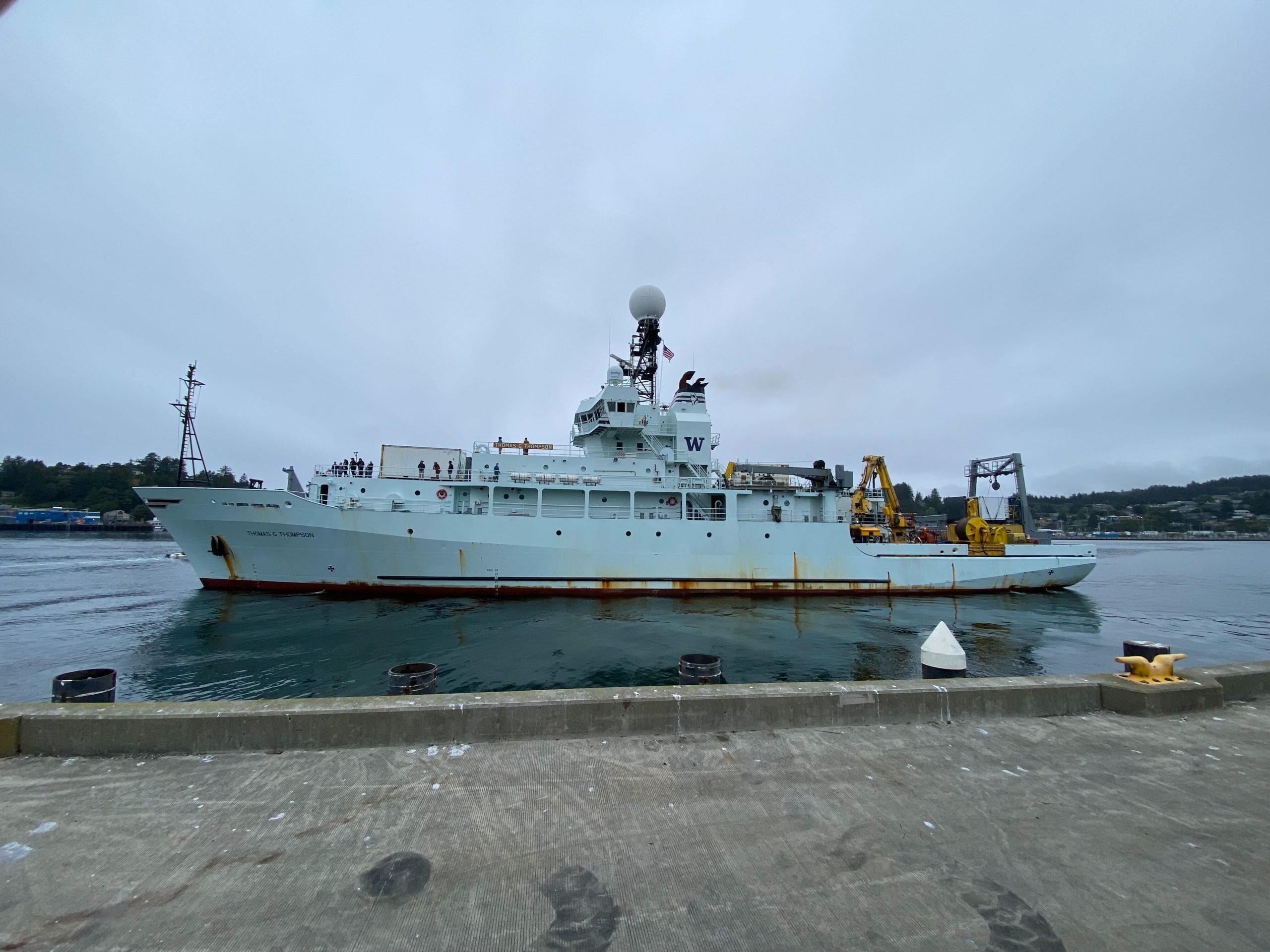45 Days of Discovery: RCA’s 8th O&M Expedition
The Regional Cabled Array (RCA) team left port in Newport, Oregon on August 5 aboard the global class research ship the R/V Thomas G. Thompson for a 45-day expedition. This is the eighth operations and maintenance cruise to the array, a network of 900 kilometers of electro-optical cables that crosses a tectonic plate and powers sensors on the seafloor and in the water column, including instrumented profiling platforms on moorings.
The expedition is such a complex operation that it will be conducted in five legs, with the ship returning to Newport to offload recovered equipment and load new and refurbished equipment for a subsequent leg. A scientific and engineering team of 26 from the University of Washington will be joined by an engineering team of 8 that will operate the remotely operated vehicle ROPOS, owned by the Canadian Scientific Submersible Facility. These groups will be joined by 28 students from the University of Washington, participating in the at-sea-experiential learning program, VISIONS, which provides undergraduate students opportunities to conduct research at sea using advanced oceanographic research instruments.

There will be a live feed video for the duration of the expedition. “During the cruise, website visitors will be able to directly observe parts of the seafloor rarely seen by humans, including the most active submarine volcano off our coast ‘Axial Seamount’ located ~300 miles offshore and nearly a mile beneath the oceans’ surface,” said Deb Kelley, principal investigator of the RCA. “ Visitors will be able to witness one of the most extreme environments on Earth – underwater 700°F hot springs teaming with life that thrive on volcanic gases and that live in the complete darkness of the deep sea. The team will also visit the Cascadia Margin, spending time at Southern Hydrate Ridge where methane ice deposits are sometimes exposed on the seafloor. This hummocky, sediment-rich environment hosts a large number of areas where methane gas seeps from the seafloor feeding dense microbial mats that also host large clams. ROPOS will also visit shallower sites that are some of the most biologically productive areas in the world’s ocean.”
The 45-day expedition required an immense logistics operation with ~20 trucks transporting >130,000 lbs. of gear to Newport. During the cruise, the ROV will deploy and recovery a diverse array of >200 instruments, several small seafloor substations that provide power and communications to instruments on the seafloor and on moorings that span depths of 2900 m (9500 ft) to 80 m (260 ft) beneath the oceans’ surface. In addition, several novel, externally funded instruments developed by scientists in the US and Germany will be installed.
Follow along as the journey unfolds: Live video feed. Student Blog. Expedition updates.


